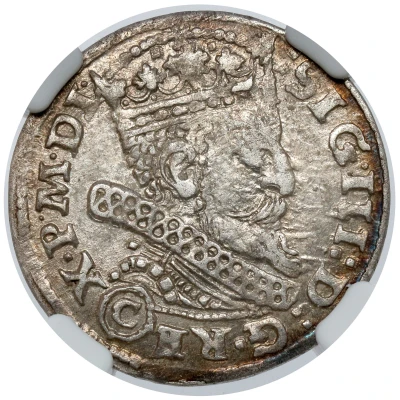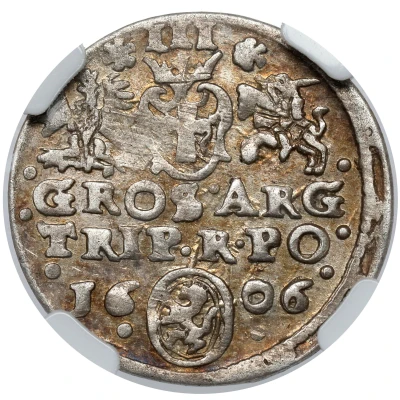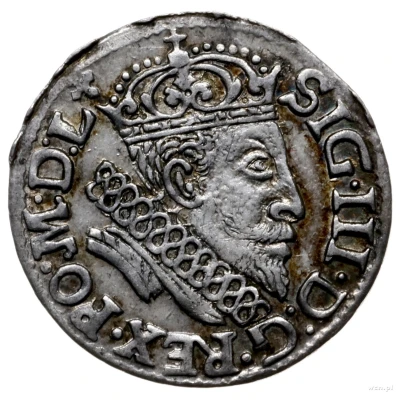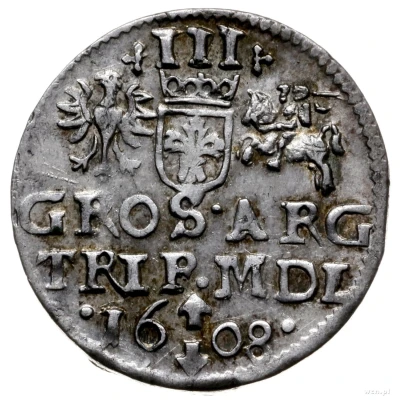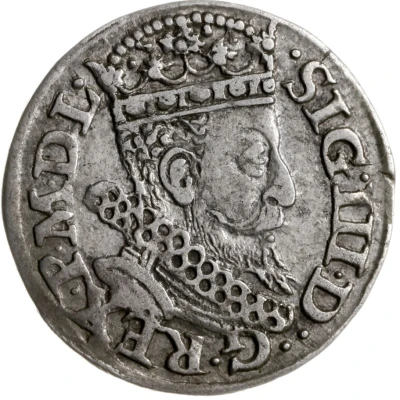
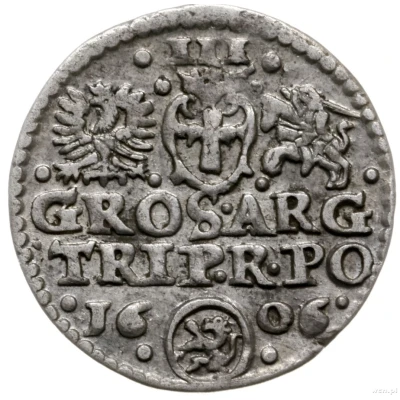

© Warszawskie Centrum Numizmatyczne s.j.
Trojak / 3 Grosze - Sigismund III Vasa Kraków; bust right, Lewart arms reverse
| Silver | - | 21 mm |
| Issuer | Polish–Lithuanian Commonwealth |
|---|---|
| King | Sigismund III Vasa (Zygmunt III Waza) (1587-1632) |
| Type | Standard circulation coin |
| Years | 1606-1607 |
| Value | 3 Groschens (Trojak) (0.1) |
| Currency | First Zloty (1573-1795) |
| Composition | Silver |
| Diameter | 21 mm |
| Shape | Round |
| Demonetized | Yes |
| Updated | 2024-10-07 |
| Numista | N#123838 |
|---|---|
| Rarity index | 95% |
Reverse
Inscription in two lines. Above, value in Roman numerals, Polish eagle, Wasa arms and Lithuanian rider. Below, date divided by Lewart arms in oval
Script: Latin
Lettering:
III
GROS ARG
TRIP RPO
16-06
Comment
Iger K.06.2aIger K.06.2b
Iger K.06.3a
Pictures: © WCN
Iger K.06.3b
Punch 1 PO DL
Punch 2 PO MDL
Pictures: © ANMN
Iger K.06.3c
Iger K.06.3d
Iger K.06.3e
Iger K.06.3f
Iger K.06.3g
Iger K.06.4a
Iger K.06.4b error date 1660
Punch 1
Iger K.06.4b error date 1660
Punch 2
Pictures: © WCN
Iger K.07.1.a
Iger K.07.1.b
Iger K.07.1.c
Iger K.07.2.a
Interesting fact
The Sigismund III Vasa coin was minted during a time of great change in the Polish-Lithuanian Commonwealth. It was the first coin to feature the image of Sigismund III Vasa, who was the King of Poland and Grand Duke of Lithuania from 1587 to 1632. This coin was minted in Krakow, which was an important city in the Commonwealth at the time. The coin's design features the king's bust on the obverse and the Lewart arms on the reverse, which symbolized the unity between Poland and Lithuania. The coin was made of silver, which was a valuable and widely used metal at the time. Overall, this coin is a fascinating piece of history that provides a glimpse into the political, economic, and cultural changes that were taking place in Eastern Europe during the early 17th century.
